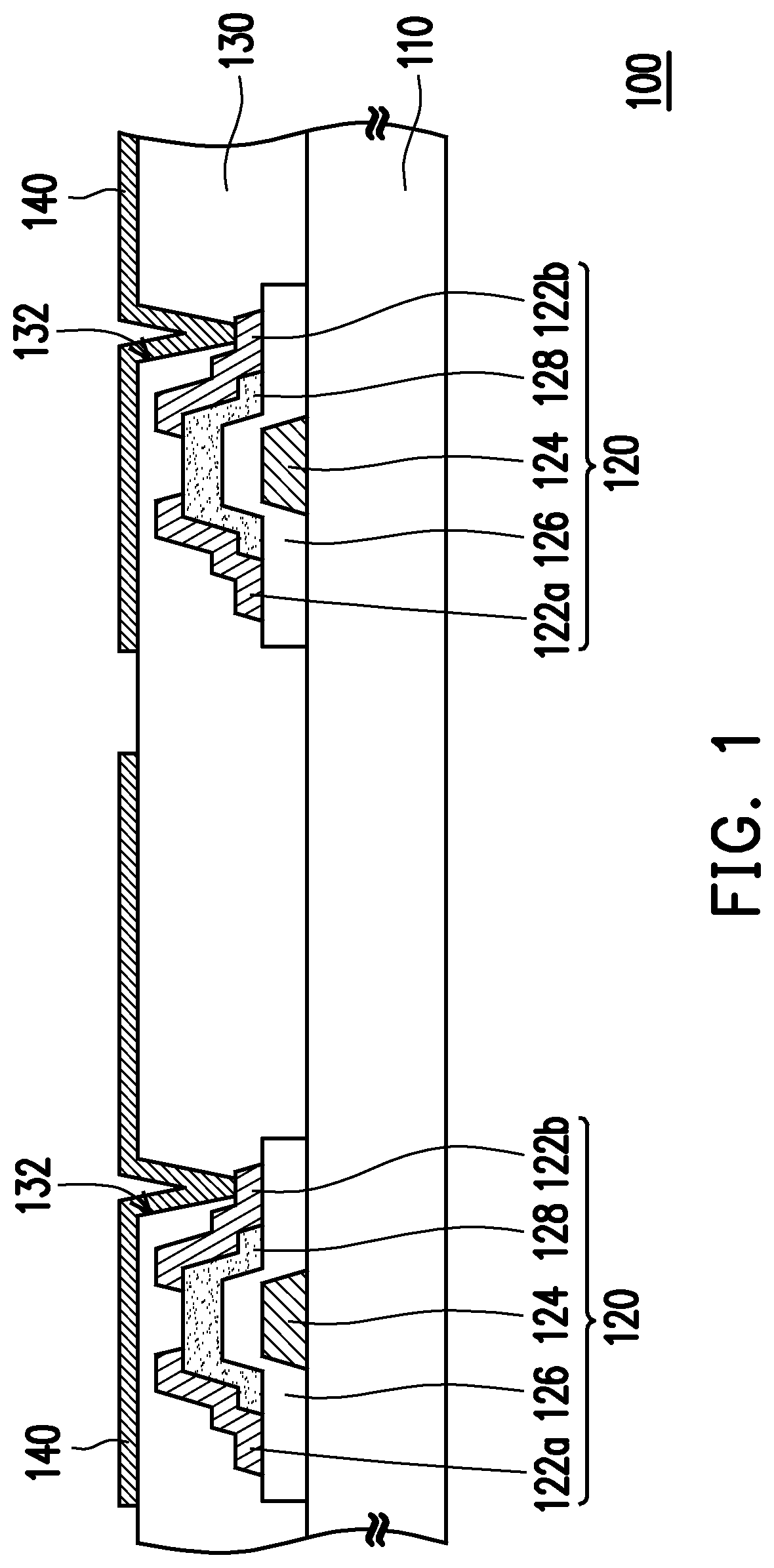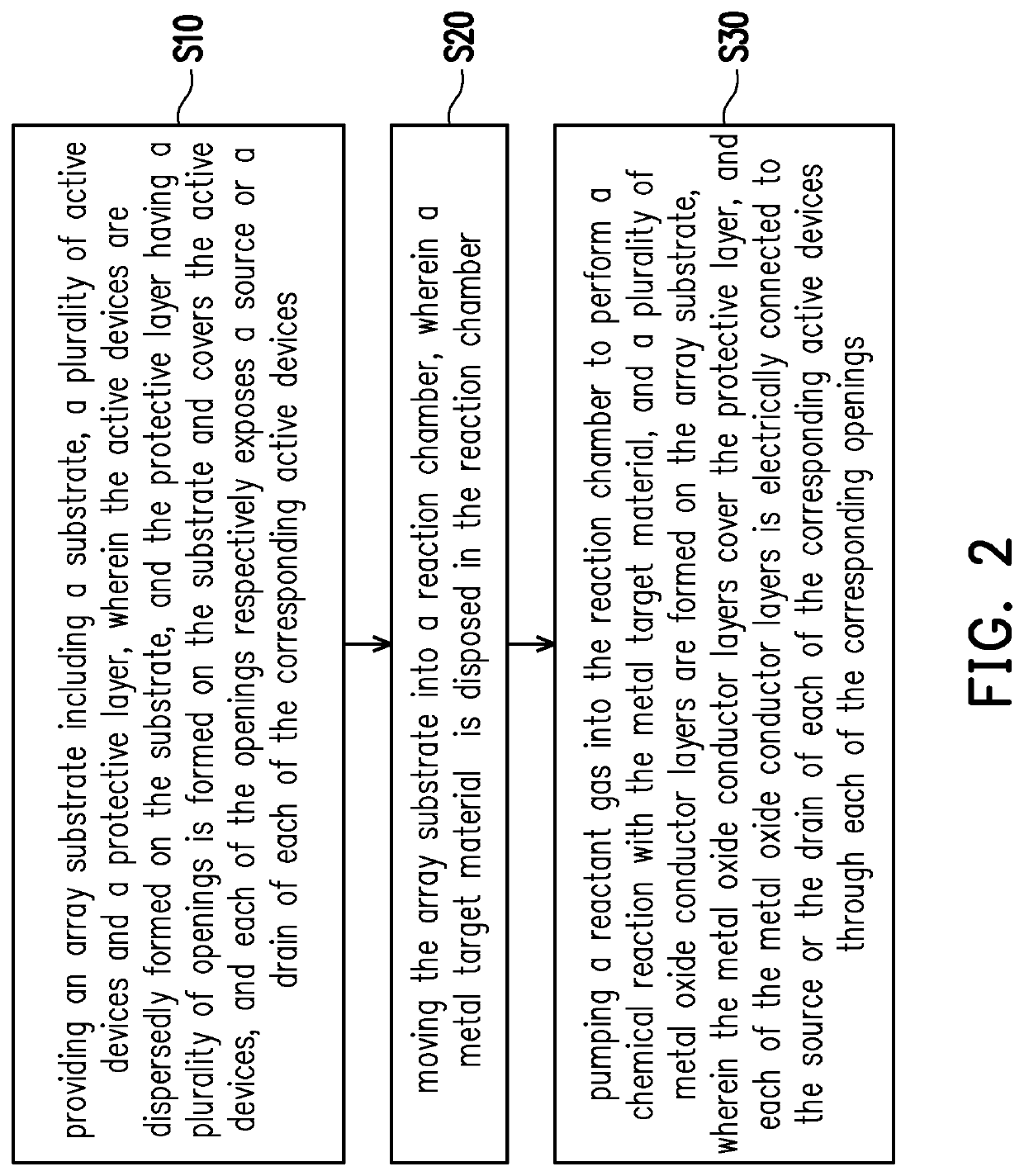Reflective active device array substrate and manufacturing method thereof and reflective display apparatus and manufacturing method thereof
- Summary
- Abstract
- Description
- Claims
- Application Information
AI Technical Summary
Benefits of technology
Problems solved by technology
Method used
Image
Examples
Embodiment Construction
[0027]FIG. 1 is a cross-sectional schematic view of a reflective active device array substrate of an embodiment of the disclosure. Please refer to FIG. 1, a reflective active device array substrate 100 of the present embodiment includes a substrate 110, a plurality of active devices 120 (Only two are drawn schematically in FIG. 1), a protective layer 130 and a plurality of metal oxide conductor layers 140 (only two are drawn schematically in FIG. 1). The active devices 120 are dispersedly disposed on the substrate 110. The protective layer 130 is disposed on the substrate 110 and covers the active devices 120. The protective layer 130 has a plurality of openings 132 (only two are drawn schematically in FIG. 1), and each of the openings 132 respectively exposes a source 122a or a drain 122b of the corresponding active devices 120. The metal oxide conductor layers 140 are disposed on the substrate 110 and cover the protective layer 130. Each of the metal oxide conductor layers 140 is ...
PUM
 Login to View More
Login to View More Abstract
Description
Claims
Application Information
 Login to View More
Login to View More - R&D
- Intellectual Property
- Life Sciences
- Materials
- Tech Scout
- Unparalleled Data Quality
- Higher Quality Content
- 60% Fewer Hallucinations
Browse by: Latest US Patents, China's latest patents, Technical Efficacy Thesaurus, Application Domain, Technology Topic, Popular Technical Reports.
© 2025 PatSnap. All rights reserved.Legal|Privacy policy|Modern Slavery Act Transparency Statement|Sitemap|About US| Contact US: help@patsnap.com



